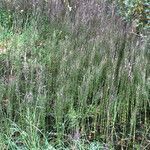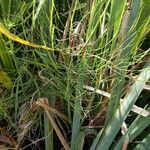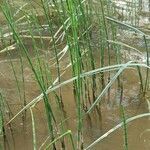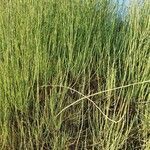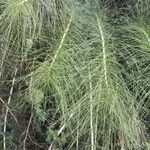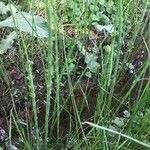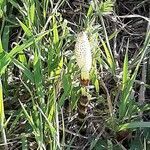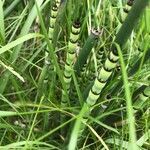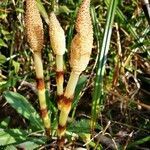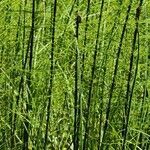Stems annual, all alike, to 1 m or more, shallowly 9–25-ridged, the ridges smooth or nearly so, the stomates in a single broad band in each furrow; central cavity commonly more than ¾ the diameter of the stem, the vallecular cavities commonly lacking except near the base; sheaths green, 4–9 mm, with persistent, narrow, sharp, black or blackish teeth 1.5–3+ mm, these not or scarcely hyaline-margined; branches none to often numerous and whorled at the middle and upper nodes, 4–6-angled, simple, thefirst internode slightly shorter than the associated stem-sheath; cone pedunculate, 1–2 cm, deciduous. In shallow water, along muddy shores, and in marshes and bogs; circumboreal, in Amer. s. to Pa., Ill., Io., Nebr., and Wash.
Aerial stems monomorphic, green, unbranched or branched, 35--115 cm; hollow center large, to 9/10 stem diam.; vallecular canals absent. Sheaths squarish in face view, ca. 4--10 × 4--10 mm; teeth black, occasionally with narrow white border, 12--24, narrow, 2--3 mm. Branches when present only from midstem nodes, spreading, hollow, ridges 4--6, valleys rounded; 1st internode of each branch shorter than subtending stem sheath; sheath teeth narrow. 2 n =216.
A large herb. It has creeping rhizomes. They are hollow in the centre. It grows 40-60 cm tall.
